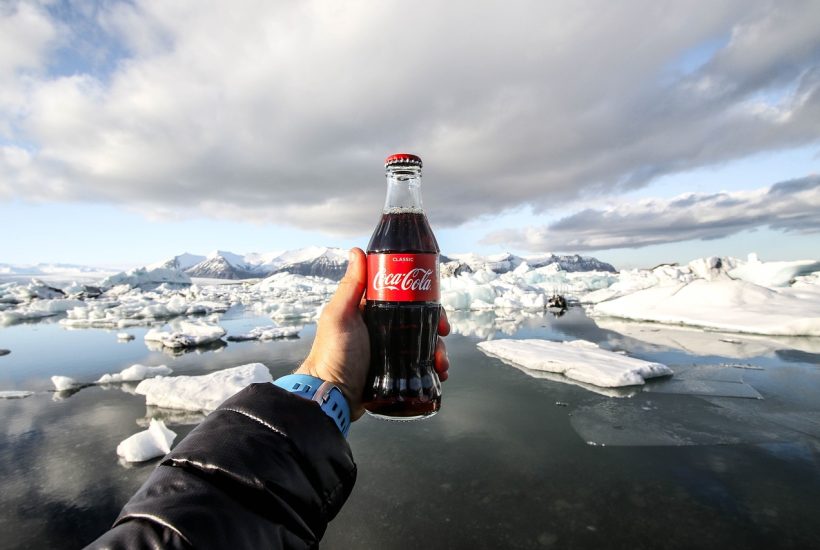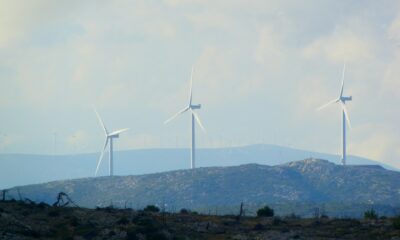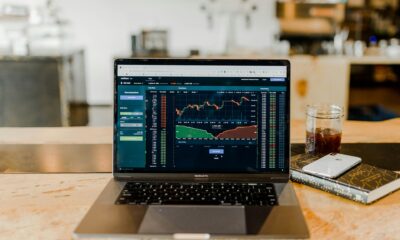Featured
ESG Analysis of the Coca-Cola Company
In addition, nine of Coca-Cola’s direct operations in India are at high risk of water stress, so without mitigation measures, production capacity could be affected by rising costs or conflicts between communities in the medium term, creating a potential negative impact of $946 million, according to Coca-Cola’s CDP water report.

The Coca-Cola Company may not be your typical favorite when it comes to ESG. The world’s largest beverage company has come under fire for its major contribution to the global plastic waste crisis and is embroiled in controversies ranging from human rights issues, pollution, and depletion of water resources, to health risks from consuming plastics. sugary drinks.
And yet, Coca-Cola is one of the best ESG companies in the soft drink industry, with industry-leading initiatives, transparent reporting, and ambitious targets on key sustainability issues. It has awarded more than $1.4 billion in grants to support sustainable community initiatives around the world and has provided access to clean water for 18.5 million people as part of its water stewardship program. It was ranked #1 among food companies for water stewardship in 2021 and is a regular holding for portfolios of ESG-related funds and ETFs.
With this background, which approach is applied? How can we look beyond an ESG score to understand if margins could be affected by externalities such as climate change, health trends, or regulations that drive the circular economy? To answer these questions, we must dig deeper.
Read more about Coca-Cola and find the most important business headlines with he Born2Invest mobile app.
Analysis of the entire production system
Coca-Cola and its 225 associated bottlers are collectively known as the Coca-Cola system. Although the company itself does not own, manage, or control most of the local bottlers, it does set system-level targets. Its incidence pricing model, whereby bottlers buy Coca-Cola concentrates at a price based on the price of final products, is intended to align the interests of bottlers and the company and drive the global sustainability strategy. Therefore, to get a holistic view, J. Safra Sarasin Sustainable AM analyzed the company thoroughly and had discussions not only with management but also with the main bottlers.
Actions regarding sugar and plastics
Sugar taxes, increasingly introduced in more parts of the world, are proving effective in reducing the consumption of sugary drinks. To adapt to this reality, Coca-Cola has been reducing the sugar content in all its products. Portfolio diversification towards healthier products and smart packaging has allowed them to remain profitable.
Similarly, some improvements on the subject of plastics. Coca-Cola has recently set an industry-first refillable packaging target, which has been applauded by NGOs. It is also the only large company so far to have made almost 100% of its packaging recyclable, reusable or compostable, anticipating the EU regulatory push towards the circular economy.
However, if you do not significantly increase your packaging collection rates, especially in areas without efficient recovery infrastructure, stock up on enough recycled PET (rPET) feedstock to meet your plastics targets (25% post-consumer recycled content for 2025) could prove difficult for Coca-Cola, just like its counterparts. Given that a quarter of the company’s carbon footprint comes from packaging and depends on a portion of the emissions reduction coming from switching to rPET (less energy intensive) unless Coca-Cola and its bottlers get to solve their ‘garbage problem’ on a global scale, their climate goals could also be compromised.
Climatic risks and water stress
The Coca-Cola syrup formula is a closely guarded trade secret. However, we know that corn and cane sugar, orange juice, coffee, and water are ingredients your system depends on. As the company already revealed in 2010, it takes about 35 liters of water to make half a liter of Coca-Cola. And most of this water footprint comes indirectly from growing necessary agricultural products.
Therefore, J. Safra Sarasin Sustainable analyzed how physical climate risks could manifest themselves and affect the brand, through the volatility of the prices of key raw materials and the interruptions of operations in the short and medium term, especially in areas with high water stress. They also look at how Coca-Cola is driving positive change in its agricultural supply chain to reduce its total footprint. This is important, as the United Nations predicts that by 2030 water stress will lead to water scarcity for almost half of the planet’s inhabitants.
In addition, nine of Coca-Cola’s direct operations in India are at high risk of water stress, so without mitigation measures, production capacity could be affected by rising costs or conflicts between communities in the medium term, creating a potential negative impact of $946 million, according to Coca-Cola’s CDP water report.
In the conversations held with the company and the main executives of its bottling companies, they have assured that the company is prioritizing its water replenishment projects in operations with high water stress to mitigate this risk. Integrating ESG factors into Coca-Cola’s financial analysis helps us address needs that ESG scores and ratings alone cannot.
In the case of Coca-Cola, although J. Safra Sarasin Sustainable were reassured by its industry-leading practices and objectives, to reflect the uncertainties that could affect it, related to a possible inflation of raw materials, the supply of rPET (recycled PET) raw material and water issues, we decided to do additional risk adjustment in our financial model and will monitor ESG KPIs on Coca-Cola’s progress on water replenishment and near-term targets for plastics going forward.
__
(Featured image by StockSnap via Pixabay)
DISCLAIMER: This article was written by a third party contributor and does not reflect the opinion of Born2Invest, its management, staff or its associates. Please review our disclaimer for more information.
This article may include forward-looking statements. These forward-looking statements generally are identified by the words “believe,” “project,” “estimate,” “become,” “plan,” “will,” and similar expressions. These forward-looking statements involve known and unknown risks as well as uncertainties, including those discussed in the following cautionary statements and elsewhere in this article and on this site. Although the Company may believe that its expectations are based on reasonable assumptions, the actual results that the Company may achieve may differ materially from any forward-looking statements, which reflect the opinions of the management of the Company only as of the date hereof. Additionally, please make sure to read these important disclosures.
First published in FUNDSPEOPLE, a third-party contributor translated and adapted the article from the original. In case of discrepancy, the original will prevail.
Although we made reasonable efforts to provide accurate translations, some parts may be incorrect. Born2Invest assumes no responsibility for errors, omissions or ambiguities in the translations provided on this website. Any person or entity relying on translated content does so at their own risk. Born2Invest is not responsible for losses caused by such reliance on the accuracy or reliability of translated information. If you wish to report an error or inaccuracy in the translation, we encourage you to contact us.

-

 Africa2 weeks ago
Africa2 weeks agoAgadir Welcomes Nearly 570,000 Tourists by May 2025
-

 Impact Investing2 days ago
Impact Investing2 days agoEuropeans Urge Strong Climate Action Amid Rising Awareness and Support
-

 Cannabis1 week ago
Cannabis1 week agoRecord-Breaking Mary Jane Fair in Berlin Highlights Cannabis Boom Amid Political Uncertainty
-

 Biotech6 days ago
Biotech6 days agoVytrus Biotech Marks Historic 2024 with Sustainability Milestones and 35% Revenue Growth

























